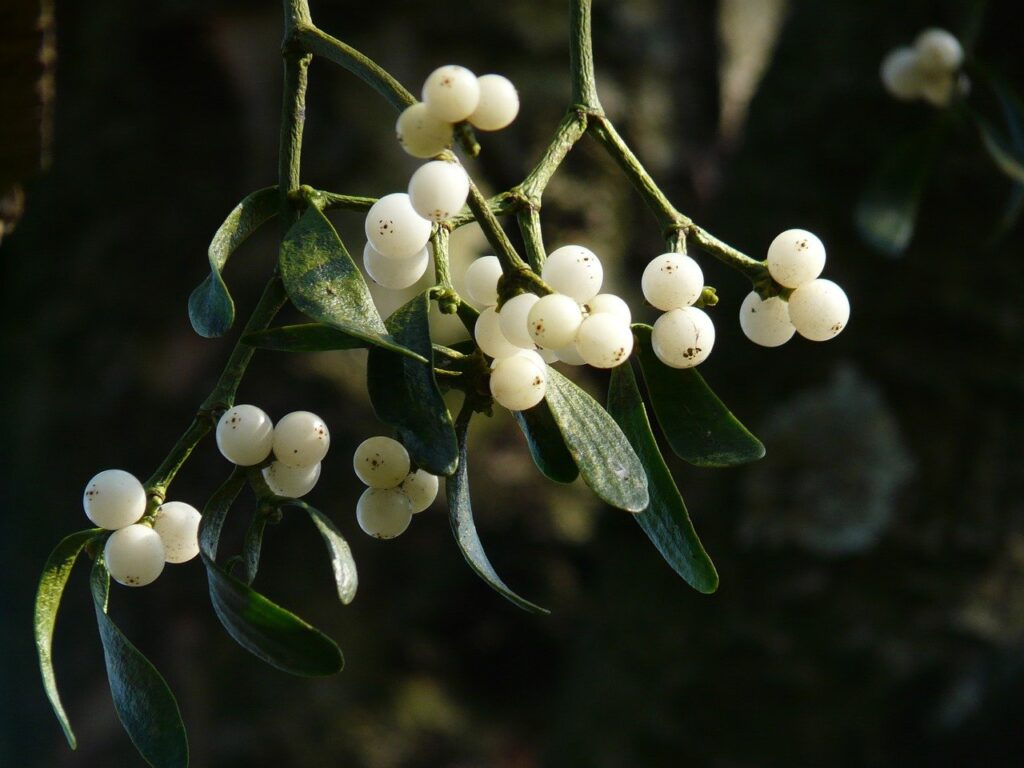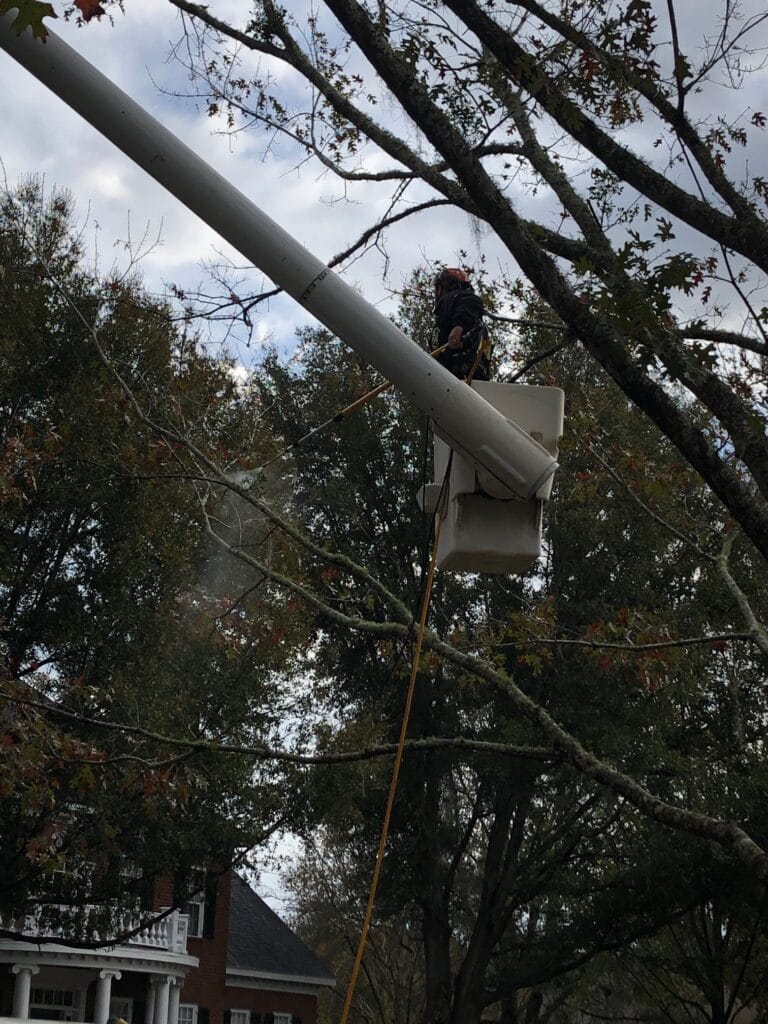December 14, 2020
What You Don’t Know About Mistletoe
Its berries feed birds, who also use the foliage for nesting. It’s used for holiday decorating, is included in many cheerful seasonal tunes, and has a long-standing reputation as a convenient excuse to kiss your crush beneath its sprigs. But, there is also a dark side to mistletoe that may surprise you. Regarding your landscaping, it’s an invasive species, and its seeds are easily transferred among the trees in your yard, allowing it to overtake quickly. Therefore, it’s essential to weed out fact from fiction when it comes to this parasite, so you can learn how to remove it from your yard for good.
Berry Surprising Facts
There are over 1,000 species of mistletoe, but the kind that grows in Florida is an evergreen flowering plant that prefers the upper branches of your yard’s older deciduous trees, which are those that shed their leaves annually. It is particularly fond of Laurel Oaks, Elms, Sycamores, and Black Cherry trees. And while it’s commonly thought of as a winter bloom, Mistletoe grows year-round, but its green leaves and white berries are most noticeable during winter months when the tree branches are bare.
Mythological Roots
One mistletoe myth centers around the Norse goddess Frigga, whose son Balder was slain by an arrow imbued with mistletoe. She wept over the plant, and her tears became its berries, bringing her son back to life. In her happiness, Frigga proclaimed mistletoe a symbol of love and that whoever stood beneath it would be kissed. Similarly, Celtic druids viewed mistletoe as a fertility symbol, and these two contexts have led to our modern association of mistletoe with kissing and romance.
Parasitic Nature
Mistletoe’s scientific name is Phoradendron leucarpum, Phoradendron meaning “tree thief,” and leucarpum meaning “white fruit,” which provides clues about its hemiparasitic nature. Hemiparasitic means that mistletoe performs photosynthesis and makes its own sugar but steals water and nutrients from its host tree anyway. As a result, the branch that houses the mistletoe and the entire tree is at greater risk of becoming weakened and malnourished, making it more susceptible to disease and pest infestations.
Easily Spread
It is probably a good thing that most romantics are unaware of the etymological translation of the word “mistletoe,” which is “dung on a twig.” This name comes from how mistletoe seeds are spread. Birds eat mistletoe berries but cannot digest them. When birds later defecate, seeds of the undigested berries take root where the bird droppings land in trees. Birds are also known to clean their beaks off on a tree’s bark, and the seeds that come off are held in place to the tree by the glue-like substance housed inside the berries, known as viscin. These seeds later grow into mistletoe.
Inedible and Toxic
Mistletoe should be kept safely out of the reach of pets and small children, particularly if used inside your home for decorating. That’s because its berries, and especially its leaves, contain poisonous phoratoxin. Human consumption of mistletoe berries causes blurry vision, slowed heartbeat, vomiting, or seizures. For pets, namely dogs and cats, the toxicity that results from eating mistletoe causes vomiting and diarrhea, even death.
How to Kiss Mistletoe Goodbye
Because of the intrusive manner in which mistletoe roots into its host tree at a great height and connects to the tree’s inner tissue and transport systems, it’s unwise and often impossible to attempt to remove it on your own. Further, simply cutting off the mistletoe won’t work because it can regrow at the same site, and systemic herbicides can travel from the mistletoe into the tree itself, damaging or even killing it.
The most effective way to remove the mistletoe is to rely on a licensed, professional horticulturist who can operate the equipment necessary to reach it and perform the extensive branch removal that may be needed to eradicate it.
Trust SkyFrog Landscape
If you have noticed mistletoe hanging about in your foliage and want to get rid of it before it takes over your trees, trust the experts at SkyFrog Landscape. We take a proactive approach and have the expertise and experience to remove mistletoe efficiently without killing your trees in the process. Contact us today for your free estimate, and make mistletoe just a memory!


